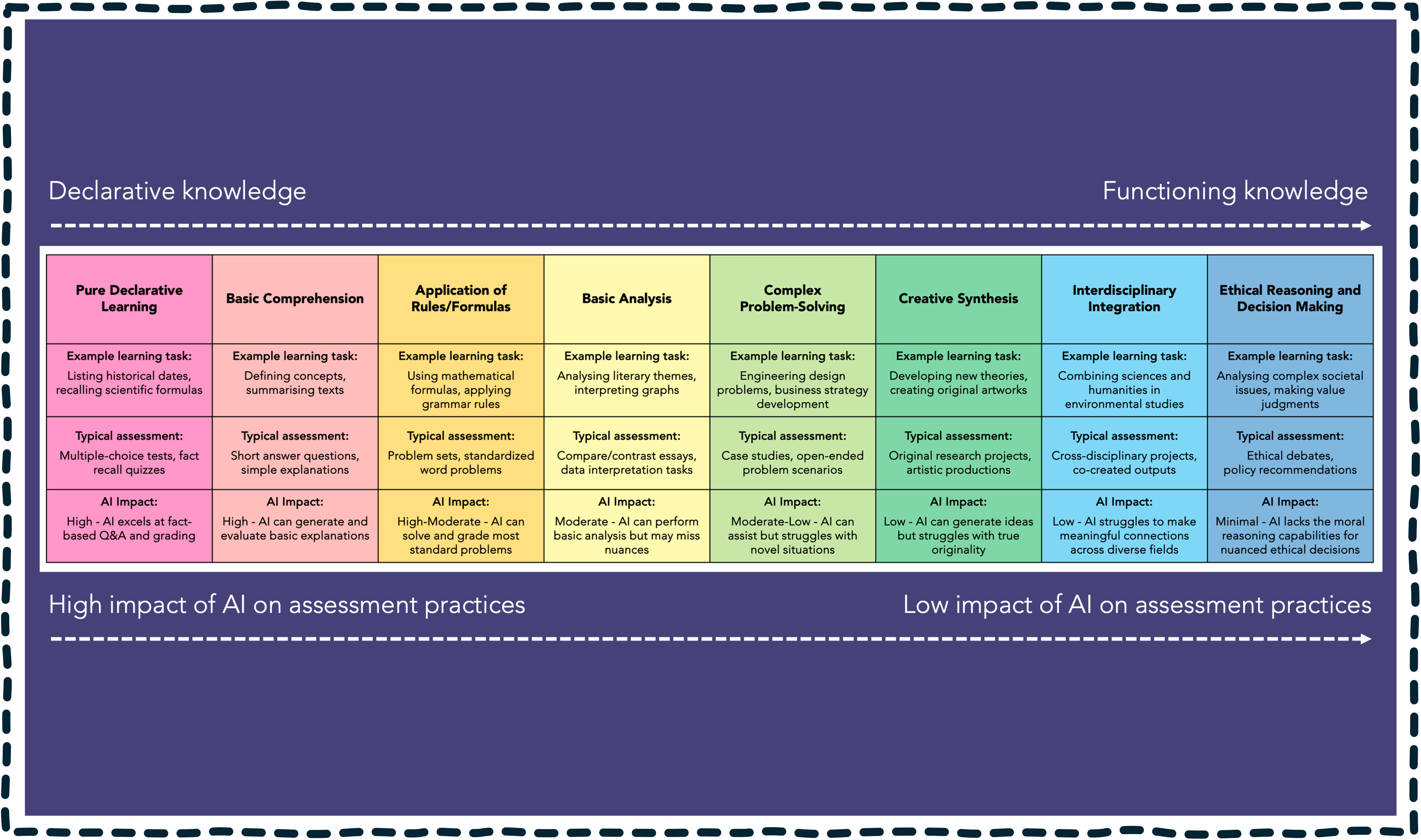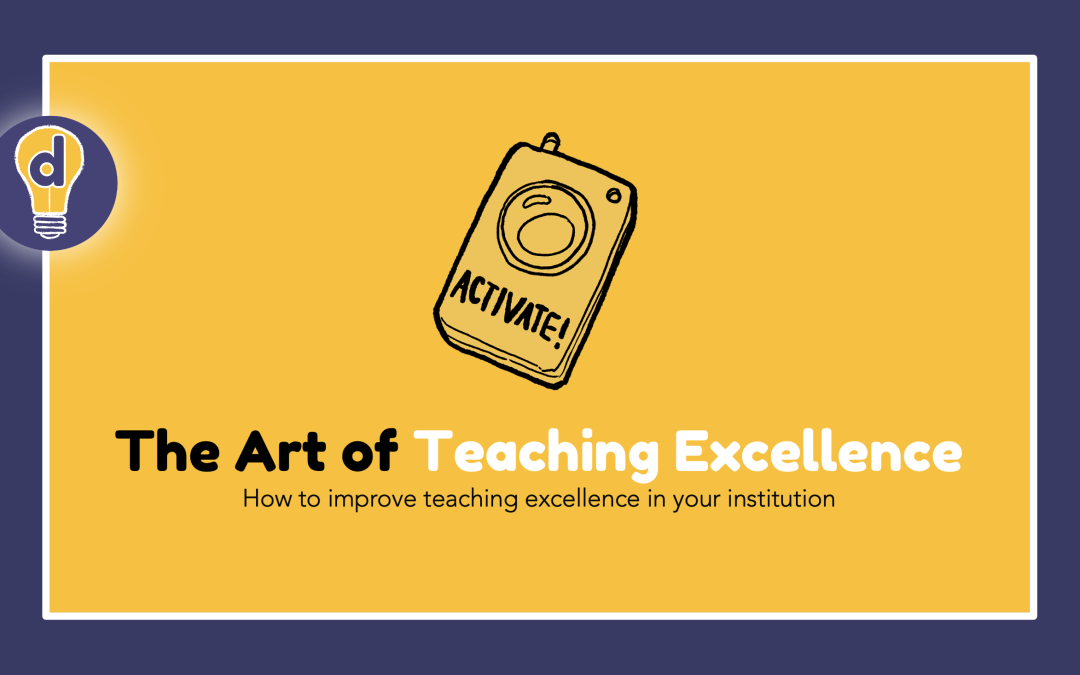If you work in further or higher education, you’re probably sick of hearing about the need to improve teaching excellence. The term itself has become deeply problematic, and so Phil and I thought we should take a look at it.
During our discussion about how to improve teaching excellence, Phil noted: “Teaching excellence is another one of those things where thinking goes to die.” The term has fallen into a contested space where its meaning depends entirely on who’s using it and to what end.
So what’s the problem with teaching excellence? Well, despite significant investment in teaching excellence frameworks and metrics, the persistent skills gap between graduates and employer expectations remains stubbornly wide. Recent reports show that whilst 89% of employers believe graduates have sufficient theoretical knowledge, only 65% believe they can apply it effectively in workplace contexts. This disconnect creates significant challenges for those responsible for improving student outcomes and institutional performance.
Teaching excellence is in disrepute
For educators, teaching excellence represents the transformative relationship between teacher and learner—the ability to “switch light bulbs on in the minds of young people” and foster intellectual curiosity. Yet within regulatory frameworks, the term has been repurposed as an assessment mechanism tied to metrics that often feel divorced from the lived experience of teaching and learning.
“It’s no longer an easy term to talk about because it’s actually a term that’s fallen into disrepute,” Phil explains. Teaching excellence has become politicised – weaponised, even – and used as a proxy for market accountability and value for money. When educators hear calls to “dial up teaching excellence,” many hear “a neoliberal siren going off in their heads” about working harder in an environment of diminishing resources.
This binary thinking creates a false dichotomy between educational values and employability outcomes, leaving educators caught in the crossfire. But the reality is more nuanced – teaching excellence and employability aren’t opposing forces but interconnected aspects of the same educational project.
From declarative to functioning knowledge
The emergence of AI is radically transforming our relationship with knowledge, and the skills required to apply it. Increasingly, what matters isn’t the declarative knowledge students possess (the facts, concepts, and theories they can articulate), but rather their functioning knowledge – their ability to apply what they know in variable contexts.

This shift challenges us to rethink teaching excellence for the 21st century. As AI rapidly advances in delivering declarative knowledge, the professional attributes required by successful graduates are those AI cannot replicate: agility, innovation, holistic problem-solving, and principled action.
The hidden curriculum
At Ding, we’ve found the optical illusion ‘Rubin’s Vase’ to be a useful way of visualising this shift. The vase represents the subject-specific curricula that students acquire, but the faces pressing the vase into existence constitute the more hidden professional attributes.
The vase – or the subject-specific curriculum – is the bare minimum that employers expect from graduates. And in the age of AI, subject-specific expertise is no longer a differentiator. “The vase is the thing that AI can do,” as Phil eloquently puts it. “AI can throw a vase, no problem, and it’s going to get better and better and better.”
Teaching excellence must therefore evolve to address this shift, focusing less on transmission of content and more on creating conditions for applying knowledge in complex, uncertain contexts.
The problem of best practice
What’s becoming increasingly clear is that subject content often serves as what film director Alfred Hitchcock called a “MacGuffin” – something that appears important to the plot but isn’t central to the story. While the subject-specific discipline attracts learners to pursue further study, the important learning happens in the spaces between.
Subject benchmark statements and apprenticeship standards exemplify this problematic approach to curriculum design. These documents attempt to codify disciplines into discrete knowledge and skills, presenting them as comprehensive roadmaps to professional competence. However, they consistently fail to articulate the hidden dimensions that actually determine success in professional environments.
These standards typically emphasise technical knowledge and visible skills while neglecting the tacit knowledge, professional sensibilities, and social competencies that enable professionals to function effectively. They focus on “the vase” – the subject-specific content that’s increasingly available through various sources – rather than the negative space that gives the vase its meaning and utility.
This ‘best practice’ approach creates a double disconnect: employers become frustrated that graduates lack skills not explicitly articulated in formal standards, while educators focus on delivering to specifications that don’t actually represent what’s needed. The result is graduates who possess knowledge but lack the functioning capabilities to mobilise it effectively.
When we examine what employers actually want, conversations quickly move beyond subject specificity to attributes such as business acumen, conflict resolution, creative problem-solving, and ethical reasoning – all elements that sit outside traditional disciplinary boundaries but are integral to workplace effectiveness.
Moving beyond metrics
So what should institutions do about this? Well, if you want to move beyond simply playing the metrics game and genuinely improve teaching excellence, here are some practical suggestions for making structural changes that will produce real impact:
Design for the gaps, not just the content.
Create intentional spaces where knowledge meets context. Meaning emerges not from the individual elements of an experience but from their juxtaposition (LINK TO KULESHOV EFFECT). Similarly, learning happens when students test their knowledge in unfamiliar contexts, creating productive cognitive dissonance that builds resilience and capability.
Challenge existing customs of duration and structure.
Netflix has revolutionised television by allowing episodes to be exactly as long as they need to be to tell their story effectively. Similarly, teaching excellence requires questioning why classes are structured as they are – is an hour-long lecture the right vehicle for your learning objectives, or merely a custom? Is a 3-year degree programme, or a 12-month apprenticeship, the most effective way to achieve the intended outcomes? Challenging duration can unlock more intentional teaching and learning.
Cultivate learning communities.
Teaching excellence requires meaningful learning spaces where perspectives interact, knowledge is tested, and students develop the capabilities for functioning knowledge. This approach recognises that learning is inherently social and happens through collision, turbulence, and difference. Rethinking teaching as community leadership instigates a potent shift in emphasis that can energise the learning and teaching experience for both educators and students.
Make the hidden curriculum visible.
Excellent teaching brings to the surface those tacit understandings, professional behaviours, and cultural norms that remain implicit in formal standards. Consciously articulating and designing for these hidden elements produces more equitable learning environments. This in turn reveals the hidden power dynamics that often privilege those from higher socio-economic backgrounds and disadvantage those who may lack cultural capital.
Embrace uncertainty as pedagogy
Rather than presenting disciplines as stable bodies of knowledge, excellent teaching acknowledges and works with uncertainty. Learning experiences that intentionally introduce turbulence and uncertainty and are much more effective at preparing students for the messy realities of the professional workplace.
Rethinking teaching excellence
Teaching excellence needs a rethink if it is to produce workplace-ready graduates. If we are to effectively equip graduates for the world of work, our teaching needs to prepare for the workplace as it truly is – complex, interdisciplinary, and constantly evolving.
Reimagining teaching excellence is an opportunity to expand its ambition and build confident, creative and resilient graduates who have the capacity to shape and transform the professional landscape.
Want to become a qualified learning designer?
We run a PGCert, PGDip and MA in Creative Teaching and Learning Design.






